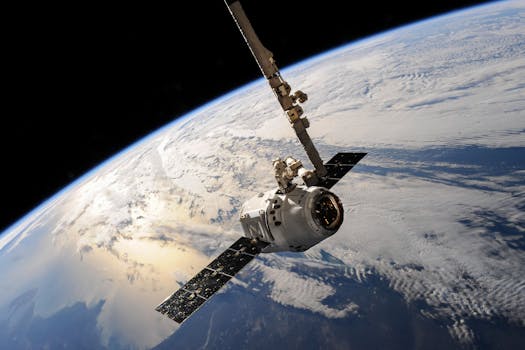
MEO Satellites: Revolutionizing Global Connectivity with Medium Earth Orbit Technology
MEO satellites, or Medium Earth Orbit satellites, are a type of satellite that operates in an orbit between 2,000 and 36,000 kilometers above the Earth’s surface. This orbit is higher than Low Earth Orbit (LEO) satellites but lower than Geostationary Orbit (GEO) satellites. MEO satellites are designed to provide a balance between the benefits of LEO and GEO satellites, offering a wide range of applications and services.
History and Development of MEO Satellites
The concept of MEO satellites dates back to the 1960s, but it wasn’t until the 1990s that the first MEO satellites were launched. The initial MEO satellites were used for navigation and communication purposes, but over the years, their applications have expanded to include Earth observation, space exploration, and more. Today, MEO satellites are used by various organizations, including governments, companies, and research institutions, to provide a range of services and collect valuable data.
Benefits and Applications of MEO Satellites
MEO satellites offer several benefits, including global coverage, high-speed data transfer, and long-lasting orbits. These characteristics make MEO satellites ideal for applications such as:
Global navigation systems, like GPS and Galileo, which rely on MEO satellites to provide location information and timing signals. Communication systems, including satellite phones and broadband internet, which use MEO satellites to provide connectivity to remote or underserved areas. Earth observation, where MEO satellites are used to collect data on the environment, climate, and natural resources. Space exploration, where MEO satellites serve as a stepping stone for deeper space missions or as a platform for astronomical research.
Challenges and Future Developments of MEO Satellites
Despite the benefits and applications of MEO satellites, there are challenges associated with their development and operation. These include the high cost of launching and maintaining MEO satellites, the risk of interference from other satellites, and the need for advanced technologies to support their operation. To address these challenges, researchers and manufacturers are working on developing new technologies, such as advanced propulsion systems, more efficient power sources, and improved communication protocols. Additionally, there is a growing trend towards the use of smaller, more affordable satellites, known as smallsats or cubesats, which can be launched into MEO at a lower cost than traditional satellites.
Conclusion
In conclusion, MEO satellites are an essential part of modern satellite technology, offering a range of benefits and applications. As the demand for global connectivity and access to information continues to grow, the importance of MEO satellites will only increase. With ongoing research and development, we can expect to see new and innovative applications of MEO satellites in the future, from improved navigation and communication systems to enhanced Earth observation and space exploration capabilities. MEO satellites are truly revolutionizing the way we communicate and access information globally, and their impact will be felt for years to come.